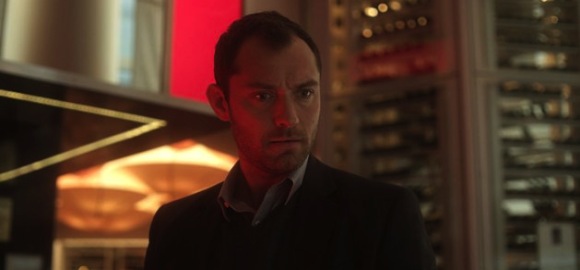Movie Review: Steven Soderbergh’s Side Effects
Steven Soderbergh’s final theatrical film is an apt farewell for the prolific filmmaker.
A few years ago Steven Soderbergh announced his retirement from filmmaking. However, one should suspect, as Soderbergh surely does, that doesn’t mean he won’t return one day. But, for now, he’s washing his hands of the film business and barring one final film for HBO (Behind the Candelabra), Side Effects is his last film to be released in theatres. Lucky for him, it’s one of his stronger pieces.
Soderbergh’s detractors often call him cold, or just a genre-hopping filmmaker more interested in a new exercise than creating something that will stand the test of time. That’s a fair argument and assessment of his work but that doesn’t mean he hasn’t made some powerful films (Out of Sight and Che come to mind). That being said, Side Effects demonstrates his strengths as a storyteller but also his weaknesses for style over substance.
Written by Scott Z. Burns, it should be no surprise the film has a kinship with Soderbergh’s most recent success, Contagion, also written by Burns. Not only do both share a major character played by Jude Law but both deal with contemporary views on health and sickness. Whereas Contagion was a meditation on how the world would handle a new viral threat similar to the Black Plague, Side Effects ostensibly deals with the business of prescription drugs. The basic premise finds Emily Taylor (Rooney Mara) recently welcoming back her husband Martin (Channing Tatum) from prison for his involvement in insider trading. Instead of overcome with joy, she’s battling depression and seeks assistance from a psychiatrist, Dr. Jonathan Banks (Jude Law) who prescribes her a few different anti-anxiety drugs before settling on Ablixa, a new drug on the market. An unfortunate, ahem, side effect is that she sleepwalks but is adamant to remain on it because it is the only one that has worked so far. That is until she wakes up to find Martin dead in their apartment, having no recollection of the murder.
From here the focus slowly shifts from Mara’s fantastically melancholy Emily to Law’s Dr. Banks as the real question becomes did Emily kill her husband in cold blood or was she under the influence of the drug, and therefore a victim of Dr. Banks’ ill medical treatment. However, to be up front without spilling any of the beans, while it teases a deeper morality tale on the complications of prescription drug use in America, it morphs into a Hitchcockian thriller with Dr. Banks as its main sleuth. Some may be disappointed that Soderbergh and Burns seemingly are afraid to tackle the drug industry of America, it’s an interesting topic but one that wouldn’t have necessarily stood as a fully formed film — just a message. Instead Burns and Soderbergh tease with questions of the industry, both the shadiness of the business and the larger existential ones, but use them as a jumping off point into a more self-contained story, which, while not always perfect, is ultimately satisfying.
The film boasts fantastic performances from the rising Rooney Mara, but also one from Jude Law which is sure to be forgotten as the year rolls on. Catherina Zeta-Jones also makes a stand out performance as Emily’s prior psychiatrist, and also marking her third collaboration with Soderbergh following Traffic and Ocean’s Twelve. However, it’s also surprising as Soderbergh’s removed style of filmmaking actually works for the film, which is about the effects of detachment from life. But, Burns also deserves his fair share of praise because it’s his script that takes the film from being merely alluring to become something more. Yet one can’t deny that it’s the collaboration with Soderbergh’s precise yet distant visual style that brings this tale to life.
Rating: 4 out of 5






